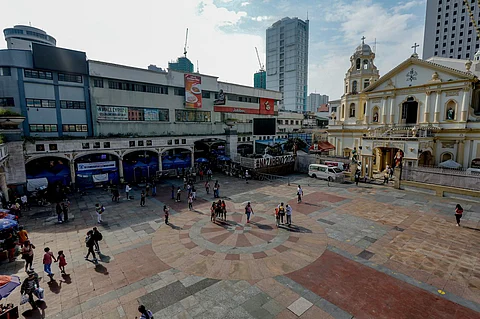
- NEWS
- the EDIT
- COMMENTARY
- BUSINESS
- LIFE
- SHOW
- ACTION
- GLOBAL GOALS
- SNAPS
- DYARYO TIRADA
- MORE

Fifty-four years ago today — 21 August 1971 — marked one of the darkest nights in Philippine political history. What began as a routine Liberal Party campaign rally at Plaza Miranda turned into tragedy when two grenades were hurled onto the stage, wounding candidates, supporters and spectators.
The bombing killed nine people, including a five-year-old and a photojournalist, and injured 95 others, many of them key opposition figures.
The attack shocked the nation and forever changed the course of Philippine politics. Senators Jovito Salonga, Eva Estrada-Kalaw and Gerardo Roxas, and Manila mayoral candidate Ramon Bagatsing were among those gravely injured.
The bombing became more than just an act of violence—it served as a precursor to the authoritarian shift under Ferdinand Marcos, who declared Martial Law the following year.
The violence that unfolded at Plaza Miranda became one of the most symbolic moments of political violence in the country’s post-war era.
Once the country’s go-to stage for fiery speeches and political rallies, the square in front of Quiapo Church—Plaza Miranda—has largely slipped from the nation’s political memory.
These days, it’s known more for sidewalk vendors, fortune tellers, and the sea of devotees making their way to the Black Nazarene.
For many younger Filipinos, Plaza Miranda is just another busy stop in the heart of Manila, not the ground zero of one of the darkest nights in Philippine politics.
But for historians and survivors, its meaning runs deeper.
“Plaza Miranda carried huge symbolic weight as a freedom park,” said Professor Dennis Coronacion of the University of Santo Tomas.
Freedom parks, by law and tradition, were safe havens for speech and dissent—a place where democracy had room to breathe. That sanctity was shattered that fateful night.
According to Professor Coronacion, the incident occurred during a period when the Marcos administration was already deviating from democratic principles and moving toward authoritarianism.
The Plaza Miranda bombing—and the wave of violence that followed—would later be used as a key justification for declaring Martial Law in 1972. It created a narrative of unrest and disorder that conveniently supported the regime’s claim that strong, centralized control was necessary to restore peace. In that sense, the bombing served both as a literal and symbolic detonation of democracy.
While the initial blame shifted between several figures, including former Manila Mayor Arsenio Lacson, President Marcos himself, and later Communist Party leader Jose Maria Sison, the truth behind the attack remains unresolved.
A theory later supported by former military rebel Victor Corpus suggested that communist forces orchestrated the bombing to frame the government and radicalize moderates.
According to this version, the Communist Party of the Philippines and its armed wing, the New People’s Army, saw the bombing as a strategic move to provoke public outrage against the Marcos administration, thereby swelling their ranks.
While Benigno Aquino Jr. faced accusations due to his political ties, Professor Coronacion underscored that no formal probe ever established his direct involvement in the incident.
Sison, on the other hand, was more strongly suspected due to his leadership role and the alleged strategic benefit such an attack would give the communist insurgency.
According to Corpus, the rebels discussed the bombing as a way to manipulate public opinion and convince international allies, like China, that their movement had widespread support.
Professor Coronacion acknowledged, however, that time has become a significant obstacle to uncovering the full truth.
As the years pass, evidence grows cold, and potential witnesses face growing skepticism.
“The farther we go away from the time that these things happen, the more difficult it becomes for us to ascertain who was responsible,” he noted.
Unless new, credible evidence or a willing eyewitness emerges, the Plaza Miranda bombing may remain one of the great unsolved tragedies in our nation’s history.
Still, the legacy of that night offers powerful lessons.
“Those who were there eventually became icons. People began to respect them for their bravery,” Coronacion said.
Despite the violence inflicted upon them, many of the survivors continued their fight against tyranny and repression. Their resilience contributed to the growth of Philippine democracy, even as it endured its darkest era.
For aspiring political leaders today, Plaza Miranda stands as both a warning and an inspiration. It reminds us of the fragility of democratic institutions and the courage required to defend them.
Political violence may scar a nation, but it can also galvanize its people to demand accountability, justice, and the preservation of democratic values.
Plaza Miranda reminds us that democracy must never be taken for granted—and that the cost of silence, complicity, or forgetting can be immeasurable.
